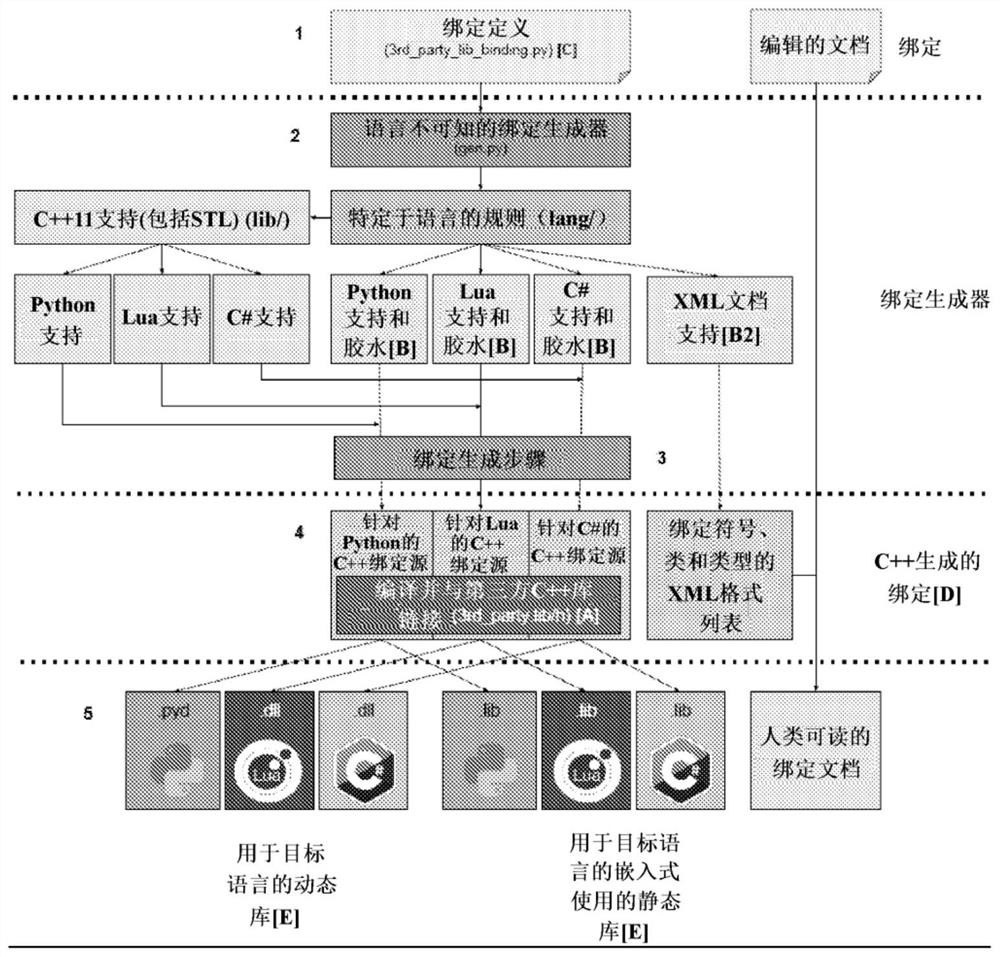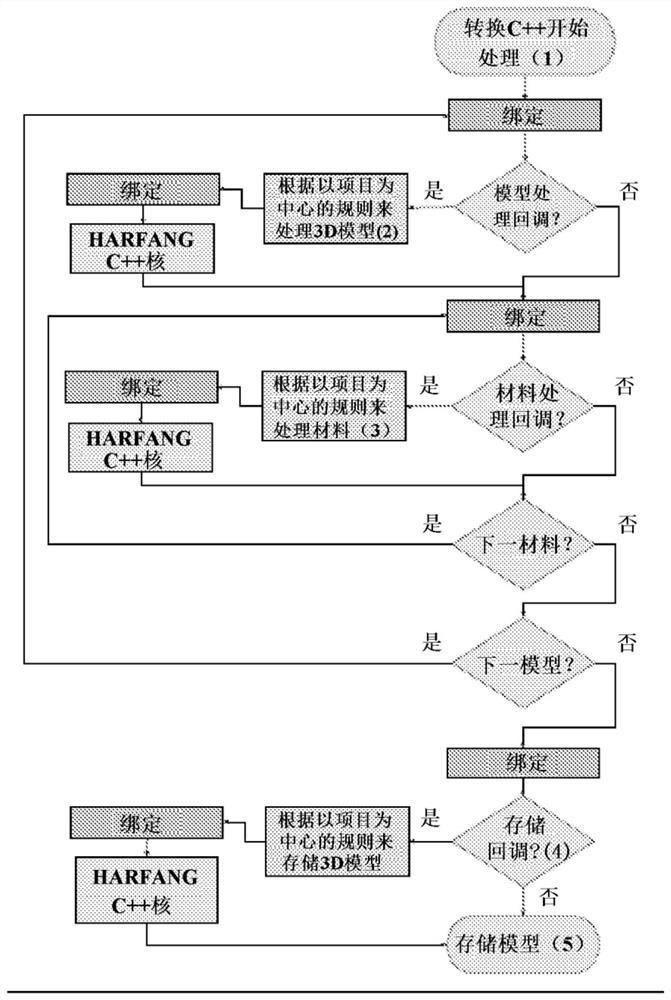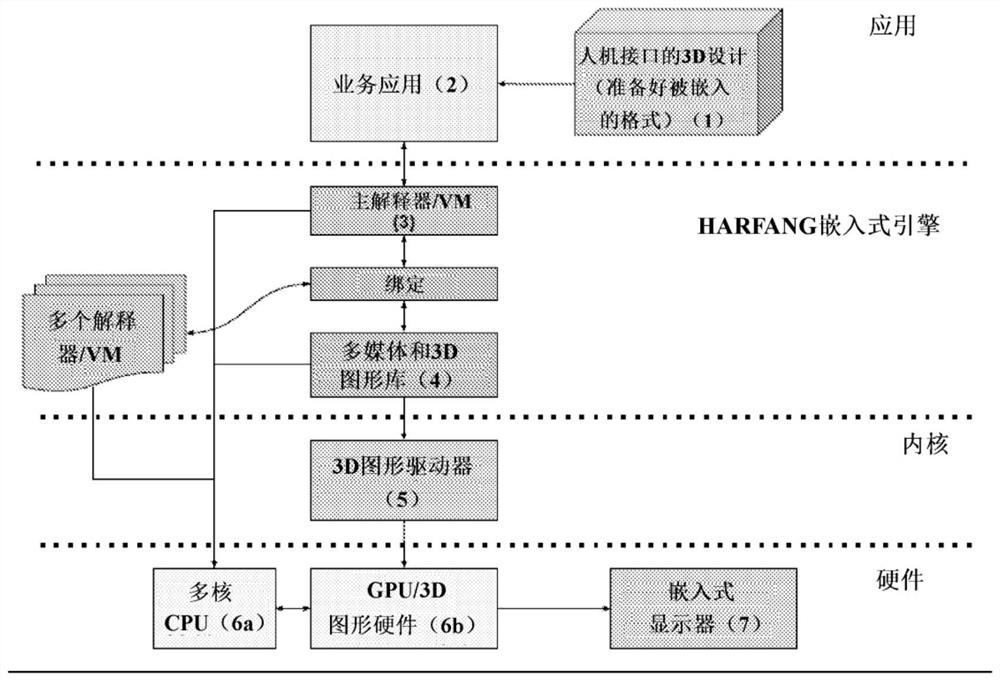Method for generating binding between c/c++ library and interpreted language, and carrying out said method to transform three-dimensional (3D) model
An interpreted language, binding technology, applied in the direction of execution paradigm, program code conversion, program loading/starting, etc., can solve the complex and expensive development and maintenance, new language constructs are not specially supported by SWIG, and multiple usage configurations no waiting problem
- Summary
- Abstract
- Description
- Claims
- Application Information
AI Technical Summary
Problems solved by technology
Method used
Image
Examples
Embodiment Construction
[0063] Since these embodiments are by no means restrictive, variants of the invention are especially conceivable which consist solely of the selection of the features described or shown hereinafter in isolation from other features described or shown (even if This selection is isolated within the stage of including said other features) if said selection of said features is sufficient to provide a technical advantage or to distinguish the invention from the prior art. This selection includes at least one feature, which is preferably functional without structural details, and / or with some structural details, if the part itself is sufficient to provide a technical advantage or to distinguish the invention from the prior art if.
[0064] will now refer to figure 1 Embodiments of the method for generating bindings according to the invention are described.
[0065] Step 1: The user of the binding generator according to the invention has a third C or C++ library [A] whose functional...
PUM
 Login to View More
Login to View More Abstract
Description
Claims
Application Information
 Login to View More
Login to View More - R&D
- Intellectual Property
- Life Sciences
- Materials
- Tech Scout
- Unparalleled Data Quality
- Higher Quality Content
- 60% Fewer Hallucinations
Browse by: Latest US Patents, China's latest patents, Technical Efficacy Thesaurus, Application Domain, Technology Topic, Popular Technical Reports.
© 2025 PatSnap. All rights reserved.Legal|Privacy policy|Modern Slavery Act Transparency Statement|Sitemap|About US| Contact US: help@patsnap.com



